Health Care Reform Updates
Health Care Reform: Timeline of Events
In March 2017, the House Ways and Means Committee and the House Energy and Commerce Committee each released budget reconciliation bills. These pieces of legislation are part of the House Republican’s American Health Care Act (AHCA), the legislation designed to repeal and replace the Affordable Care Act (ACA). This article details the act’s milestones thus far.
- March 24—The House failed to secure enough votes to pass, so the AHCA was pulled from the floor before a vote was held.
- April 24—The MacArthur Amendment was introduced. This amendment would allow states to apply for a waiver that would let them opt out of many ACA provisions. Accepting the waiver could allow insurers to raise premiums on individuals with pre-existing conditions, charge more depending on age and not cover all of the ACA’s essential health benefits.
- May 3—The Upton Amendment was introduced. This amendment would establish an $8 billion fund for states that applied for waivers, to help with the higher premiums that would come as a result.
- May 4—The AHCA passed the House in a party-line vote, with 217 for and 213 against. Soon after, the Senate said it would begin drafting its own version of the health care legislation.
- June 22—Senate Republicans unveiled their own version of the ACA repeal bill, called the Better Care Reconciliation Act (BCRA). It is similar to the AHCA, but contains some differences.
What to Expect
The BCRA would need a simple majority vote in the Senate to pass. However, amendments may be made before a Senate vote is taken.
Senate Republicans have indicated that they would like to take a vote prior to the Senate’s July 4 recess. If the BCRA passes the Senate, it would need to go back to the House for approval before being signed into law by President Donald Trump.
For more information on health care reform, contact Thams Agency today.
ACA Affordability Percentages Decreasing in 2018
On May 5, 2017, the Internal Revenue Service (IRS) issued Revenue Procedure 2017-36 to index the contribution percentages in 2018 for purposes of determining affordability of an employer’s plan under the Affordable Care Act (ACA).
For plan years beginning in 2018, employer-sponsored coverage will be considered affordable if the employee’s required contribution for self-only coverage complies with the following:
- Does not exceed 9.56 percent of the employee’s household income for the year, for purposes of both the pay or play rules and premium tax credit eligibility
- Does not exceed 8.05 percent of the employee’s household income for the year, for purposes of an individual mandate exemption (adjusted under separate guidance)
This is the first time since these rules were implemented that the affordability contribution percentages have been reduced. As a result, some employers may need to reduce their employee contributions starting Jan. 1, 2018, to meet the adjusted percentage.
Employer Shared Responsibility Rules
The affordability of health coverage is a key point in determining whether an applicable large employer will be subject to a penalty. Employers may use an affordability safe harbor to measure affordability of their coverage. The three safe harbors measure affordability based on Form W-2 wages from that employer, the employee’s rate of pay or the federal poverty line for a single individual.
The affordability test applies only to the portion of the annual premiums for self-only coverage, and does not include any additional cost for family coverage.
Individual Mandate Exemption
The ACA’s individual mandate requires most individuals to obtain acceptable health coverage for themselves and their family members or pay a penalty. However, individuals who lack access to affordable minimum essential coverage are exempt from the individual mandate.
This affordability contribution percentage was adjusted to 8.05 percent for plan years beginning in 2015, 8.13 percent for plan years beginning in 2016, 8.16 percent for plan years beginning in 2017 and 8.05 percent for plan years beginning in 2018.
SHOP Exchanges to End Online Enrollment
On May 15, 2017, the Centers for Medicare and Medicaid Services (CMS) announced significant changes to the Small Business Health Options Program (SHOP) Exchanges under the Affordable Care Act (ACA). Under these changes:
- Employers would be able to obtain an eligibility determination for SHOP participation through HealthCare.gov.
- Employers would enroll directly with an insurance company offering SHOP plans, or with the assistance of an agent or broker registered with the Exchange, instead of enrolling online at HealthCare.gov.
CMS plans to issue regulations implementing these changes, effective Jan. 1, 2018.
These changes apply in federally facilitated SHOPs (FF-SHOPs) and state-based SHOPs using the federal platform. State-based SHOPs could continue to provide online enrollment or adopt the federal direct enrollment approach.
According to CMS, these changes are being made to promote insurance company and agent or broker participation and make it easier for small employers to offer SHOP plans to their employees, while maintaining access to the Small Business Health Care Tax Credit.
CMS noted that insurance company and agent or broker participation, as well as overall enrollment in the FF-SHOP Exchanges, has been lower than anticipated and, at its current pace, is unlikely to reach expectations.
